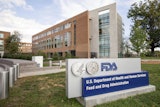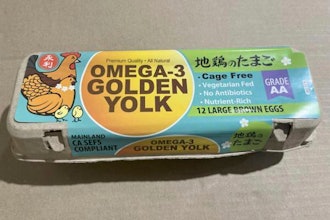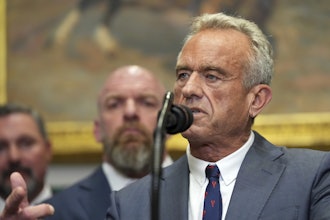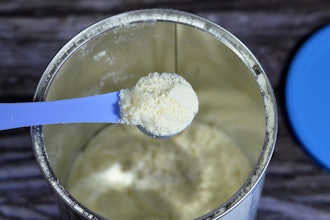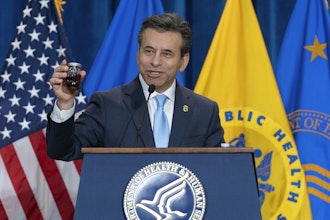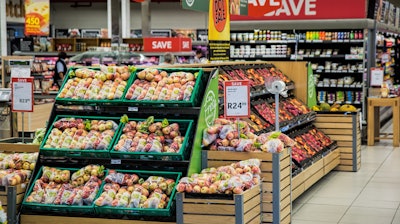
The most startling figures from the food industry are those that hint at the major financial burden of product recalls. According to the Grocery Manufacturers Association (GMA) and the Food Marketing Institute (FMI), the estimated average cost for a food recall is $10 million — and that is only the direct costs to the company, such as the retrieval and disposal of the tainted product. Factoring in the indirect costs, such as lawsuits, sales losses and damaged reputation, drives that cost even higher.
Food packaging is advancing in many ways, with its principle roles being to protect food products from outside influences and to provide consumers with ingredient and nutritional information — making it a critical component in the overall safety process. However, with food supply chains spanning over large distances and through multiple intermediaries, contamination and mislabeling risks at the packaging stage are often overlooked and emphasis on food safety usually lies in the preparation of the food itself.
In fact, researchers at Queens University conducted the first ever analysis of all food recalls announced in the United Kingdom, United States and Ireland over the last decade. The research identified 2,439 product recalls and found that the biggest driver of food recalls resulted from operational mistakes, such as incorrect labelling and food corruption along the supply chain.
The risk of recalls
While most food recalls are voluntary, it is usually in the best interest of a food facility to fully cooperate and initiate a recall when requested. Federal and legal agencies will take quicker and more decisive action when a product poses a significant risk to human health if a manufacturer or distributor is unwilling to launch a voluntary recall, or if the agency decided that the company’s voluntary action is ineffective.
In 2010, multinational food manufacturing company, Kellogg’s, issued a voluntary recall of 28 million cereal boxes because of an “uncharacteristic off-flavor and smell” imparted to the food from the waxed inner packaging. Whilst the company claimed that the chance of serious illness from the smell was low, the products could cause vomiting and diarrhea among sensitive consumers.
In response to the consumers who brought this issue to light, Kellogg’s immediately isolated the wax material and destroyed it to eliminate the risk of it making its way back into the production line. Even though this was a voluntary recall with no serious illnesses reported, the brand’s reputation suffered, with reports showing that the company’s stock prices fell by 0.8 percent.
Food and drink processing corporation, Nestlé, had to mandatorily recall two million liters of baby milk in four European countries due to traces of IsopropilThioXantone (ITX) in its cartons. ITX was in the ink used to print the rolls of material before they were converted into packaging. Once the inks were printed and UV-cured onto the carton, the material was rolled up for transport to the assembly point. However, by rolling the material, the printed outside came into contact with what would be the inside of the carton, and traces of ITX were transferred.
Although Nestlé attempted to calm consumer fears that their children were in danger of ingesting ITX, the nature of the product meant that this incident was particularly controversial. The recall cost the company around $1.75 million and damaged its reputation for baby products in the process.
Food fraud
Food fraud describes any product that is deliberately mislabeled, misrepresented, diluted or manipulated. Unsurprisingly, profit is the main motivator behind this crime — with everyday products like honey, alcohol, milk and coffee being the most commonly counterfeited goods. Counterfeit beverages often contain cheap substitutes for alcohol, including dangerous chemicals used in cleaning fluids and methanol, which is usually used in antifreeze.
Advancements in software are now enabling manufacturers to monitor supply chains digitally, allowing them to easily identify areas where traceability could be improved. Using intelligent supply chain software, a food manufacturer can view real-time production data from their suppliers. By adding the supplier’s data to their own, the manufacturer can easily identify if the wrong batch of ingredients has been dispatched, before they are used in manufacturing.
Food manufacturers must have faith in their own traceability efforts and reduce the likelihood of food fraud occurring. However, outside of the factory walls, manufacturers are required to hand this responsibility over to the wider supply chain.
To combat any weaknesses or risks of food fraud, manufacturers should only select suppliers that they trust will consistently adhere to traceability requirements. By identifying every commodity, manufacturers can map their material supply chain inputs across all their procurement categories, and, ideally, trace every single product back to its origin.
Mislabeling
Properly declaring allergens in products is another crucial process to avert product recall. Once a company has identified the potential allergens, and processed products according to its hazard analysis and critical control point (HACCP) system, it is responsible for ensuring the product is adequately packaged, labeled and stored. These procedures should include the accurate identification of all potential allergens.
Considering that someone goes to the hospital for a food allergy reaction every three minutes, it is troubling that undeclared allergens and ingredients are one of the main drivers behind product recalls. The United States Department of Agriculture (USDA) recently evaluated allergen-related recalls and found that they are usually caused by new food ingredients, new suppliers, the product in the wrong package or a misprinted food label.
Mislabeling can be easily controlled by an effective quality assurance department — it is essential to control labels at all parts of the process. Another good way to safeguard against mislabel recalls is to use automated vision inspection systems for labeling operations. Vision inspection systems capture 100 percent of the product defects they are programmed to detect, eliminating the potential of mislabeled products reaching the consumer.
The effects of recalls can be far-reaching, affecting everything from consumer health to brand confidence. With the increase in automation sophistication to boost productivity and profit margins, it is becoming more achievable to have a clear, set process in place throughout the whole production cycle.
 Milenovic
Milenovic
Tatjana Milenovic is global head of food and beverage at ABB.
